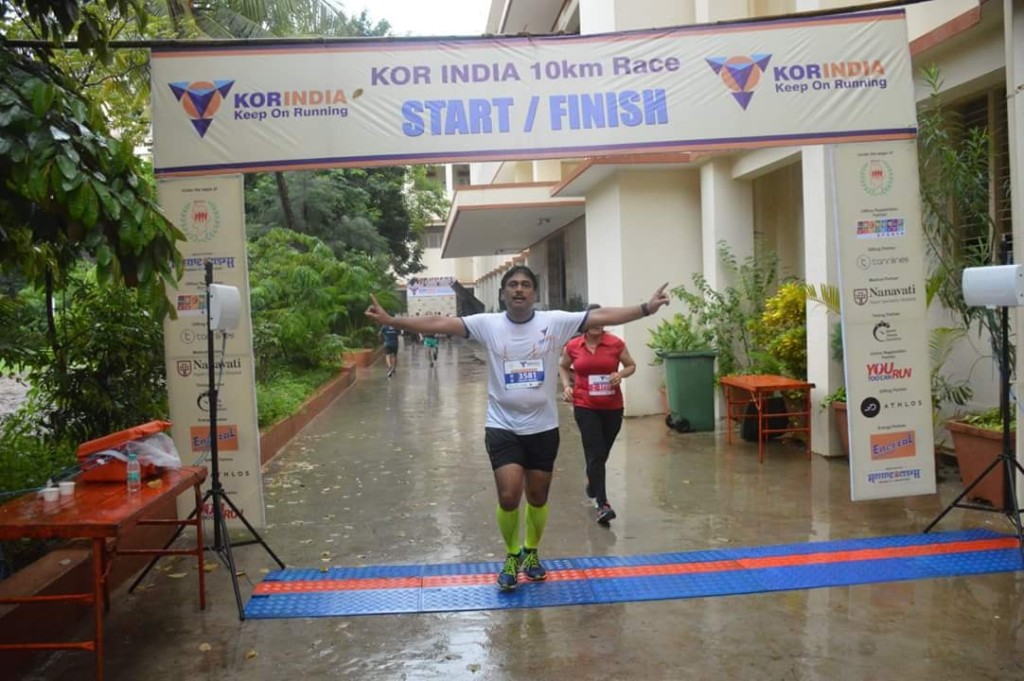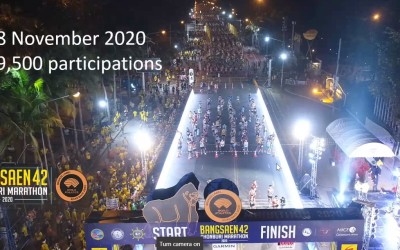#AskYourRaceDirector – Running Events And The Rains

With the running calendar becoming busier with each passing year, it has become very common to organize running events in the rain. Here’s YouTooCanRun sharing some key points for organizers to conduct a race in the rains more efficiently.
.
AT THE START HOLD AREA
1. Read the weather forecast, remember that the forecast is right too often to ignore it and wrong too often to depend on it. Waiting for the perfect weather isn’t an option, as the race must go on. Use the forecast as the rough guide and be prepared for the worst, as there is nothing like being over-prepared when it comes to rains.
.
2. The holding area should preferably be an artificial surface with good drainage. Because the last thing that runners want, is to do Zumba in puddles of water or have water seep into their shoe post the run. In case of an open ground, it is better to have the holding area on a raised wooden platform. It helps in avoiding the muck.
.
3. It is desirable to have a covered holding area for various reasons, viz. to protect the electronic, medals, trophies, food and also provide the runners some respite from the rain where they can seek shelter. German hangers are the best in weatherproofing the space, they can be assembled in various sizes. The other alternative remains to put bamboo or pipes together and to drape them with plastic sheets. On the return, if the course goes thru open mud and mucky parts, provide for some means of cleaning them. Flowing water, thick plastic mats and hand brushes are options.
.
4. Electronics should be given special attention for obvious reasons, the sound system and television monitors need to be covered with plastic for water proofing them. In one large event, gusts of wind, accompanied by heavy rain, toppled all LCD panesl put up around the stadium.
.
5. If budget provides then give caps to the participants as water may get into the eyes and blur the vision of a runner. It could prevent accidents. It is also good branding for event organisers, after all everyone’s tired of running tees.
.
6. It is a known fact that the human body produces more urine when it cannot throw it out as sweat. The frequency of urination will increase and it is desirable to have more toilets in the holding area as well as the on the course.. A good ratio is to have 2 toilets per 50 woman and 1 toilet per 75 men.

.
ON THE COURSE
7. Winds usually accompany rains and thus all start and finish gantries, road signs should be secured. Metal wire tied to lamp posts, trees or such and weights are desirable. There have been many events where the road signs have toppled over and Kilometer markers have moved away from where they should have been. Safety of the participants cannot be compromised.
.
8. The Volunteers on the route needs to stay dry too. As well as the water, energy drinks and food. Water proof tents are a wise investment for all the aid stations.
.
9. Study the course to check if there is any part in the course where water flooding could occur. If flooding does occur, get the stormwater drains cleaned beforehand and as a backup, have a housekeeping staff ready to clear puddles. Runners thus wouldn’t have to squeeze themselves to run on small dry patches, harming their chances of personal best. In one event, all runners ended up wasting time climbing on road dividers etc to avoid getting their shoes wet. Giving them a good, clean and safe course is your responsibility.
.
10. Cover all timing readers with plastic bags. There have been cases where timing volunteers didn’t carry plastic and it started raining, water entered the timing mats and needless to say, runners didn’t get their respective splits and timings. The event did not meet the qualifying standards later on. So, take care of your timing mats and readers.
.
11. Even though less water is consumed while running in the rains, most regular runners will still consume water. It is important to provide enough water like you would do on a dry day.
.
12. Taking care of the junction volunteers is important. Umbrellas are nice, but ideally, they should be given a cap and a poncho or a raincoat. They are available in bulk for cheap. If your sponsor is willing to brand them, there is nothing like it, as you have a larger real estate for your sponsor’s brand.
.
13. Route photography might get affected during rains. Umbrellas and covers could be provided to photographers, so they can do the job without risking damage to their cameras. A volunteer could help them by holding the umbrella for them.
.
AT THE FINISH
14. Athletic officials need to record the finisher’s time with pen and paper. It becomes impossible for them to record the data during the rains, hence, A covered tent at the finish line is highly recommended to see to that the timings are recorded properly.
.
15. Serving cooked meal is always a challenge but a hot meal and a cup of tea is always welcome. If not, at least a dry box is desirable. There have been instances where water seeped into the boxes and food inside was then wet and soggy. A sure put off!
How was your experience of the monsoon run you ran last? What would you have liked to see improved?
Have fun running in the rains.





Leave a Reply